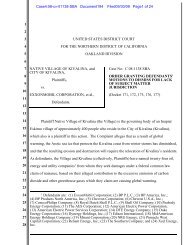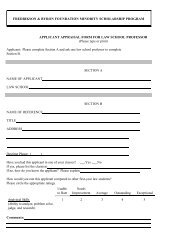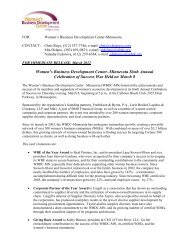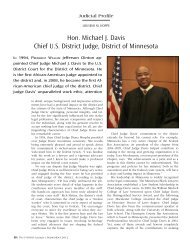Fin 48 - Fredrikson & Byron PA
Fin 48 - Fredrikson & Byron PA
Fin 48 - Fredrikson & Byron PA
You also want an ePaper? Increase the reach of your titles
YUMPU automatically turns print PDFs into web optimized ePapers that Google loves.
(D. Mass. 1997); cf., Diversified Indus. v. Meredith, 572 F. 2d 596, 611 (8 th Cir. 1978)<br />
(adopting a “selective waiver” doctrine that precludes discovery of a party’s privileged<br />
information even after it has given it to a government agency).<br />
If, however, the disclosure of a privileged document is unintentional, as may occur<br />
in litigation when thousands of pages of documents or massive amounts of electronic data<br />
are produced to the adverse party, the privilege may not be lost if the disclosing party was<br />
otherwise diligent in its efforts to protect the privileged documents from disclosure.<br />
IV. Privilege and Waiver Problems Arising From FIN <strong>48</strong> Compliance.<br />
A. The IRS Audits the Taxpayer’s Returns.<br />
To understand the privilege problems that FIN <strong>48</strong> presents, we can consider the<br />
following hypothetical:<br />
A corporate taxpayer claims various research tax credits on its returns for three<br />
years. Before filing its returns, it retained experts who performed studies to help the<br />
company determine whether the expenditures qualified for the credits, and, if so, in what<br />
amounts. Based on those expert reports and its own study of the facts and law, the<br />
taxpayer claimed the credits in the aggregate amount of $25 million on its returns. The<br />
IRS then commences an audit of those credits for those three years.<br />
To represent its interests in the IRS audit, the company retains outside tax and<br />
litigation counsel. Those lawyers, in turn, retain additional experts in various disciplines<br />
who conduct their own studies and confirm the merits of the reported credits. Counsel<br />
also periodically provides the taxpayer with analyses of the strengths and weaknesses of<br />
the case, including assessments of the thoroughness and persuasiveness of the company’s<br />
20
















